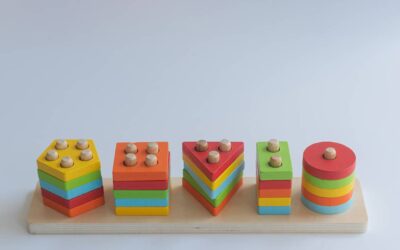In today’s modern world, where technology reigns supreme, there is something truly magical about traditional handmade toys. Crafted with love, skill, and attention to detail, these treasures from the past continue to captivate children and adults alike. In this blog article, we celebrate the charm and significance of traditional handmade toys, exploring how they preserve cultural heritage, foster creativity, and provide a timeless play experience.
- A Glimpse into Cultural Heritage
Traditional handmade toys offer a window into the rich cultural heritage of different communities around the world. Passed down through generations, these toys reflect the unique traditions, values, and craftsmanship of a particular region or culture. Whether it’s wooden tops from Germany, hand-knitted dolls from Scandinavia, or intricately carved puzzles from India, each toy carries a piece of history and offers a connection to our collective past. By introducing children to these traditional toys, we keep cultural traditions alive and promote a sense of appreciation for diversity.
- Encouraging Imaginative Play
Traditional handmade toys have a special ability to ignite the imagination and inspire creative play. Often made with simple designs and natural materials, they leave room for children to bring their own stories to life. From hand-carved figurines that become characters in epic adventures to hand-sewn puppets that take center stage in imaginative performances, these toys provide a platform for unstructured play and storytelling. By engaging with traditional handmade toys, children develop problem-solving skills, empathy, and a sense of agency in their play experiences.
- Skillful Craftsmanship and Artistry
Handmade toys are a testament to the skillful craftsmanship and artistry of their creators. Craftsmen and artisans meticulously carve, sew, paint, or weave each toy by hand, infusing it with a unique character and soul. The attention to detail and the love poured into every stitch, stroke, or carve make these toys true works of art. Traditional techniques and craftsmanship are preserved and celebrated through the creation of these toys, ensuring that generations to come can appreciate the beauty of handmade craftsmanship.
- Sustainable and Environmentally Friendly
Traditional handmade toys often embrace sustainable practices and environmentally friendly materials. Crafted from natural materials like wood, fabric, or clay, these toys have a smaller ecological footprint compared to mass-produced plastic toys. Handmade toys are often made using locally sourced materials and techniques that prioritize sustainability. By choosing traditional handmade toys, we contribute to a greener future and teach children the importance of respecting and preserving the environment.
- Connection and Emotional Value
Traditional handmade toys hold a special place in our hearts and create a sense of connection. They are often treasured keepsakes, passed down through generations, carrying memories and stories within their fibers. These toys have the power to evoke nostalgia, fostering a sense of continuity and belonging within families. The emotional value associated with traditional handmade toys extends beyond their playfulness, making them cherished heirlooms that carry the love and history of generations.
Conclusion
Traditional handmade toys are not just playthings; they are gateways to culture, imagination, and connection. They offer a glimpse into our shared heritage, celebrating the artistry of skilled craftsmen and artisans. By choosing these toys, we preserve traditions, inspire creativity, and teach children the value of sustainability and craftsmanship. Let us embrace the magic of traditional handmade toys, nurturing the joy and wonder they bring to both young and old, and ensuring that their timeless charm endures for generations to come.



0 Comments